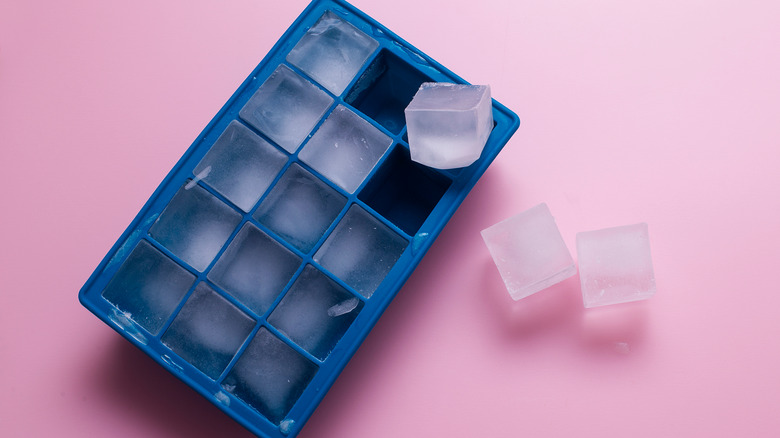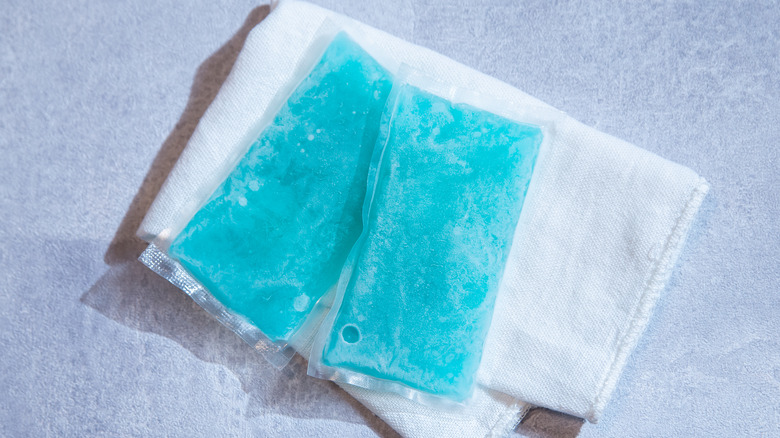Can Ice Help Treat Acne?
From toothpaste to various herbal masks, there's a lot of talk around purported at-home remedies for acne. While it's always a good idea to consult with a dermatologist when it comes to treatment for skin conditions, experts weigh in on whether or not ice may be an at-home treatment worth a try.
It seems that ice may hold some potential when it comes to acne treatment, but only to an extent, reports Bustle. Board-certified dermatologist Dr. Jenny Liu explains, telling the publication, "Ice doesn't help to treat the root cause of acne in any way." Therefore, ice won't be able to combat clogged pores, bacteria, or overproduction of skin oils. Yet, it may help reduce symptoms associated with inflammatory acne, such as cysts, pustules, papules, or nodules, notes Healthline. However the same cannot be said for non-inflammatory acne — meaning that ice will not be effective against symptoms of whiteheads, blackheads, or severe cystic acne related to changes in hormones (per Bustle).
How to safely apply ice to acne
Rather than fighting the underlying cause of acne, ice can help relieve the inflammation and swelling that comes along with it (per Greatist). Applying ice to the affected area will cause the temperature of the tissue to drop as the blood vessels shrink, thereby minimizing swelling and numbing the pain. Dr. Liu also notes via Bustle that ice may also aid in shrinking a pimple's size and reducing redness. All in all, however, ice will not treat the acne itself or protect against future breakouts. Instead, ice may be worth a try if you're looking to alleviate some of the associated symptoms.
But before you reach for your ice cube tray, there are some risks to consider before doing so, primarily frostbite, reports Greatist. Because direct skin contact with ice can be dangerous, be sure to wrap the ice in a cloth covering prior to placing it on clean, dry skin. Hold the cold compress in place for no more than one minute before removing it. You can reapply the ice again every few minutes, but do not repeat this cycle beyond a period of 15 minutes. Additionally, experts at Healthline state that if you notice blistering, changes in skin color, or prolonged redness or numbness, stop icing the area and promptly reach out to your physician.


